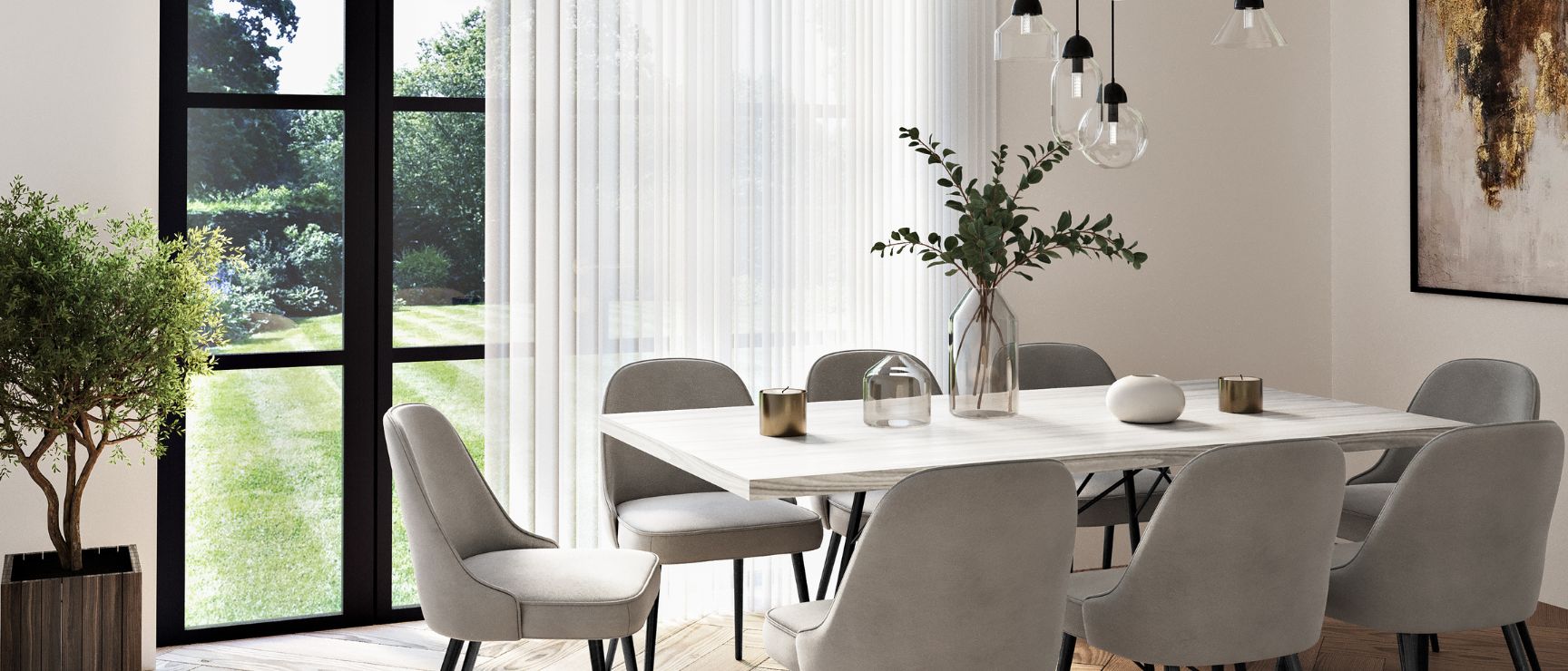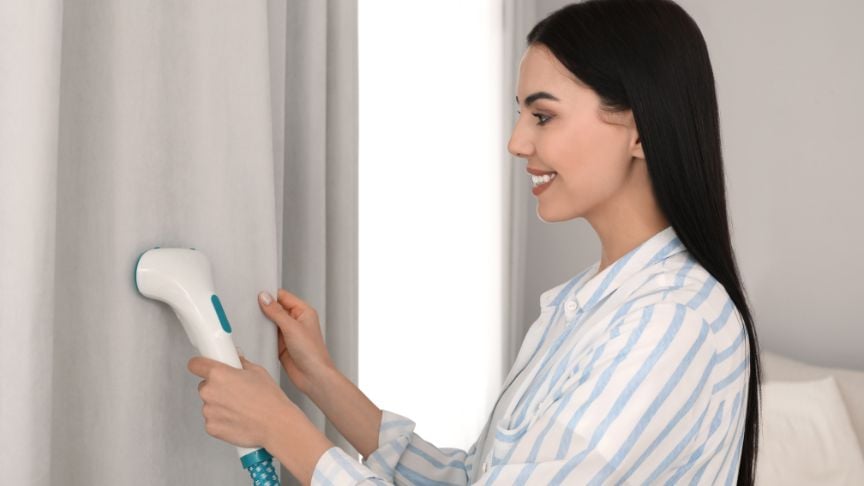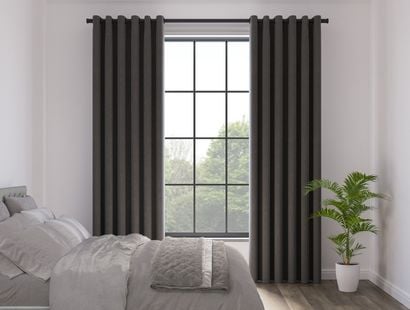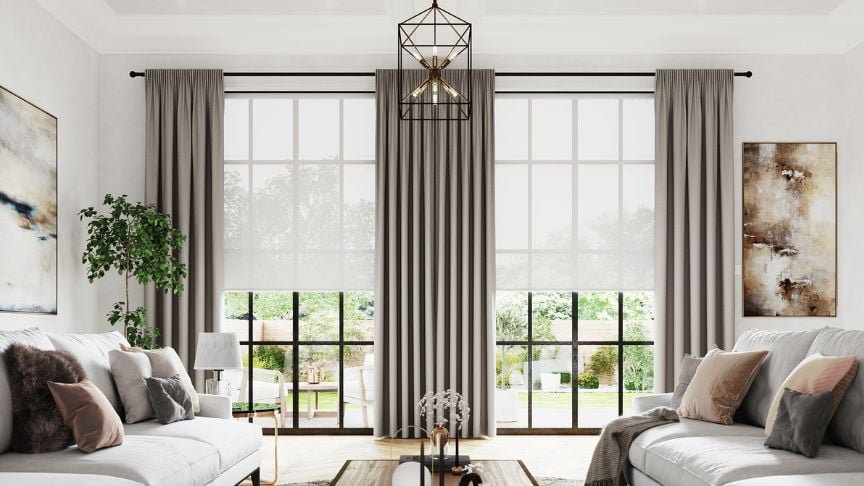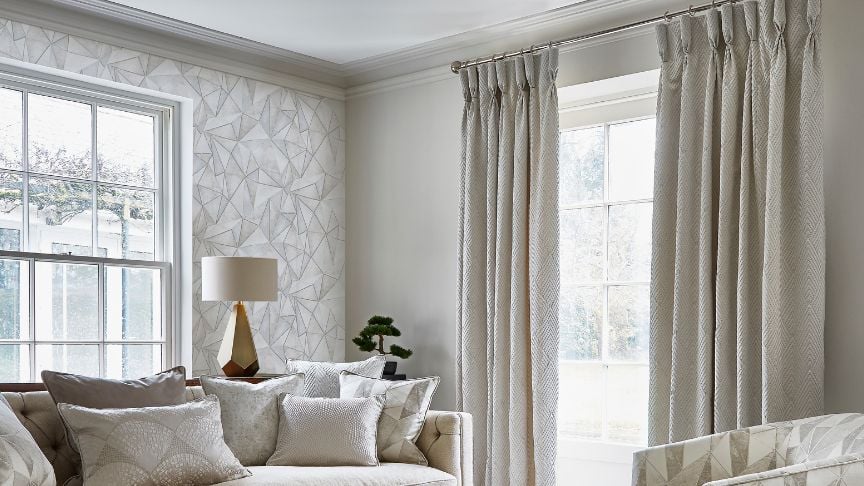Need new curtains and wondering what length to go for? Floor length is the standard length for curtains and is the preferred style for many. However, there are other factors you should consider. Read on to discover your options and our expert measurement recommendations.
What factors affect how long your curtains should be?
Aesthetic Style
Think about the overall look and style you want to achieve in your room. Different curtain lengths can create various visual effects. Pooling, where the curtain fabric gently gathers on the floor, adds luxury. While curtains above the windowsill suit a vintage or heritage aesthetic.Design Elements
Consider other design elements in the room, such as the height of the ceiling, the colour scheme, and the type of flooring. Your curtain length should complement these elements.
For example high ceilings create a sense of grandeur and space. To complement and enhance this you could opt for floor-length curtains that extend all the way to the floor. These longer curtains can draw the eye upward, emphasising the height of the room and creating a more luxurious feel.
Room Function
Consider the purpose of the room. For formal living or dining areas, longer curtains may be more suitable, while shorter curtains could work well in specific areas, like windows above your kitchen cabinets or sink. For your bedroom, you want to create a sense of comfort and cosiness, so we would recommend floor-length curtains to help achieve this.Window Type
The type and size of your windows can impact your choice. Tall windows may benefit from longer curtains, while very small windows may look better with shorter ones.
Bay windows are often a focal point in a room, and many homeowners want to enhance their elegance and grandeur. In such cases, longer curtains that extend well below the windowsill and reach the floor can add drama and sophistication. These curtains can beautifully frame the bay window, creating a striking visual effect.
Obstacles
Take into account any obstacles near the windows, such as radiators, deep windowsills, or furniture. You may need to adjust the curtain length to accommodate these obstacles.
Maintenance
Think about how easy it will be to maintain your curtains. Longer curtains that touch the floor will gather more dust and dirt, while shorter ones may require less upkeep.
Room Traffic
In high-traffic areas where people frequently walk near the windows, shorter curtains might be more practical to avoid them getting in the way.
Personal Preference
Ultimately, your personal taste and style preferences should play a significant role in your decision. Choose a curtain length that you find visually appealing and that suits your overall design vision.
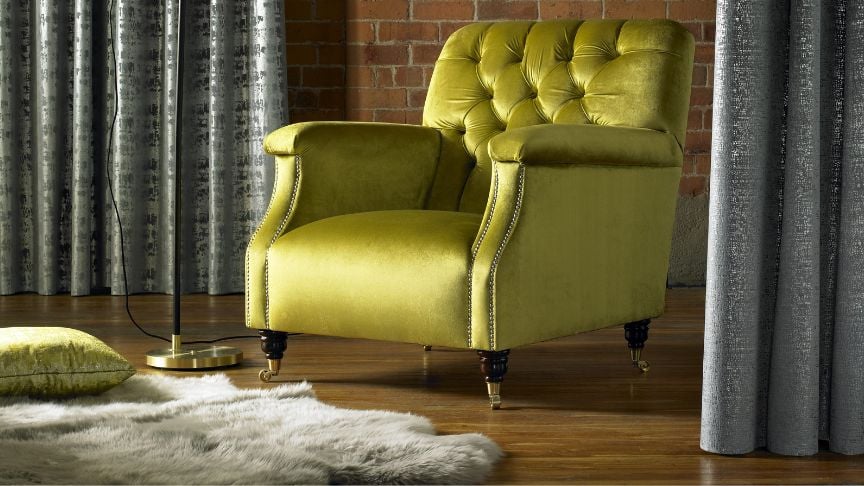
Floor Length Curtains
Classic and stylish, floor-length curtains are an eye-catching interior feature. You will likely see this popular style in most homes, and when looking for inspo on Instagram and Pinterest. At this length, curtains are easy to open and close and reasonably easy to maintain.
If you like this style but have a radiator underneath your window, this option can still work; however, as more of a style feature to frame the window rather than for functional purposes such as to keep a draft out.
To achieve this look, your curtain fabric should touch the floor or finish 1cm above the floor as if hovering.
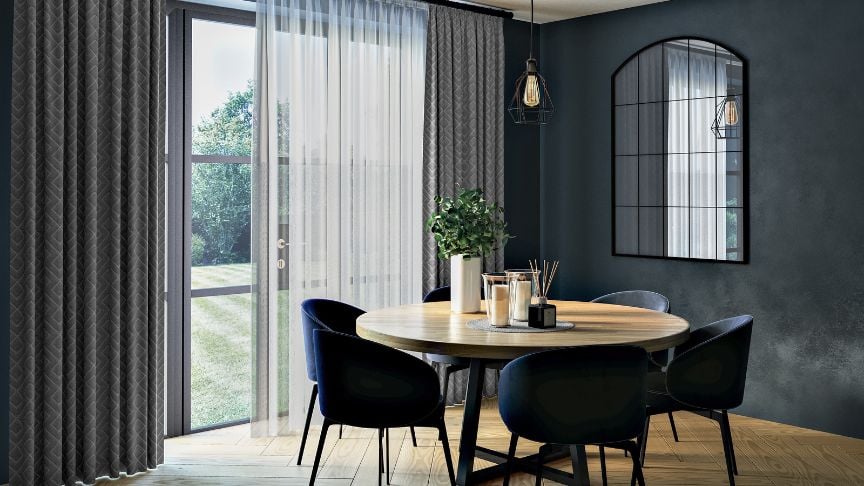
Pooled Curtains
Pooling is when the curtain fabric pools on the floor by a few centimetres. Interior stylists often use this tactic to give the feeling of luxury. This style creates a daring aesthetic often used in formal rooms, which can look romantic and rich.
For light pooling, we recommend adding 5cm to your curtain length. For generous pooling, add 12cm.
The downside to this style is the curtains will require more maintenance. They're likely to gather more dust and dirt, so they are not the ideal option for busy areas in your home, where children play, or if you have pets. If your fur baby decides to nap on your pooled curtains, they'll likely need cleaning.
Check out our easy guide on how to clean curtains.
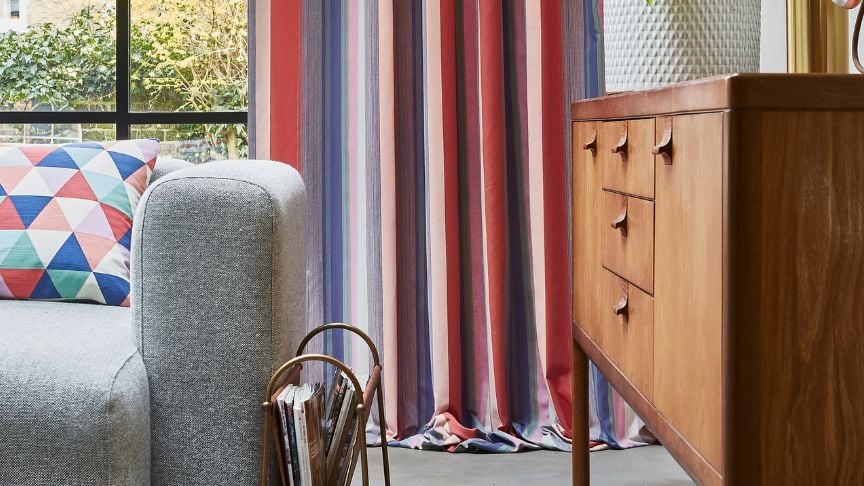
Curtains above the windowsill
Ending your curtain length above the windowsill is more of an old-fashioned style but can work exceptionally well with a country or heritage interior scheme.
We recommend this length if you have a particularly deep windowsill or for areas such as a kitchen where the window is above your cabinets or sink. Soft cloth fabrics, of course, can be used near your sink, but there is more risk of mould. For windows like these, we recommend waterproof window treatments such as PVC roller blinds or faux wood blinds.
This length of curtains is the easiest to maintain. As the fabric is well above the floor, you will have less debris, therefore they should require cleaning less often.
We recommend ending the curtain length 1 cm above the windowsill.
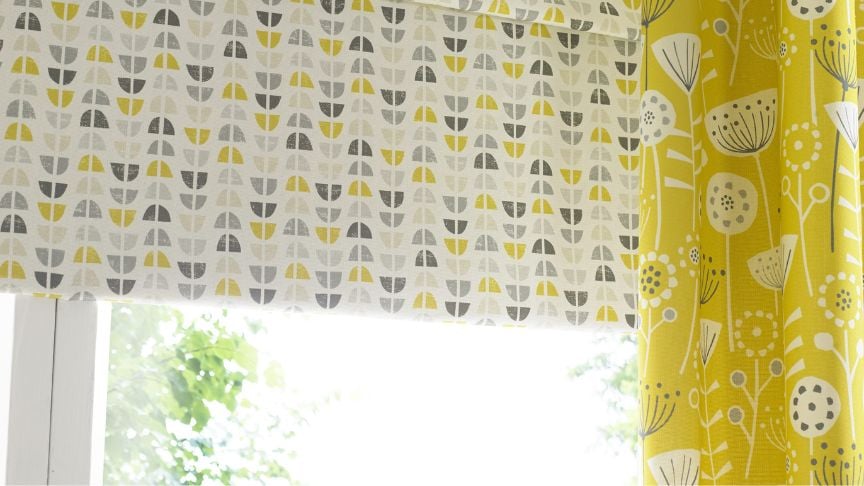
Curtains below the windowsill
For shorter curtains, this is the more popular and stylish option. The fabric overlaps the windowsill, which helps block external light and draughts, making this a better choice than ending the length above the windowsill.
If easy maintenance is more important to you than style, this is the way to go. Areas with lots of traffic may benefit from having the fabric further away from the floor.
We recommend ending the curtains 15cm below the windowsill. However, if you have a radiator in the way, finishing just 1 cm above the radiator is wise so as not to obstruct the heat.
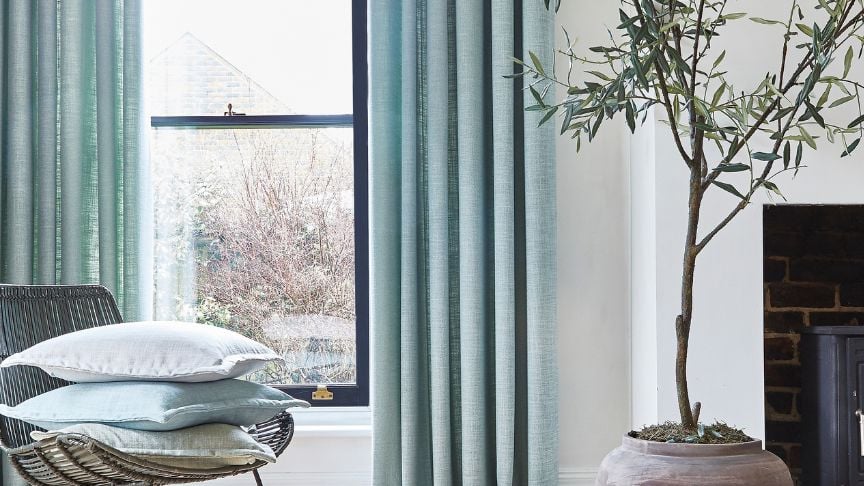
Ready-made standard curtain lengths
Ready-made curtains are available online and in retail stores in a variety of sizes. The most common standard lengths are:
54 inches (137 cm)
72 inches (183 cm)
90 inches (228 cm)
108 inches (274 cm)
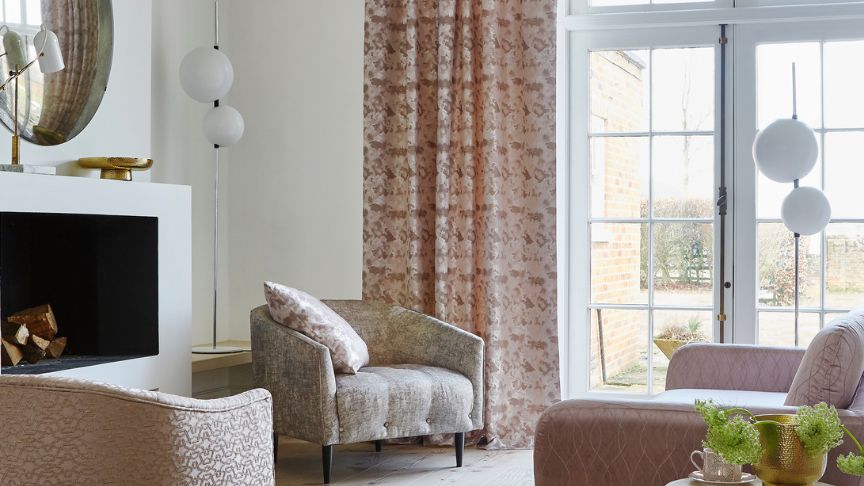
Made-to-measure curtain lengths
With made-to-measure curtains, they are made to the exact length and width you require. Therefore they're suitable for any windows, including large windows and high ceilings, as most made-to-measure curtains can be manufactured to over 3 metres in length.
Check out our easy measuring guides on how to measure for pencil pleat curtains and how to measure for eyelet curtains.
FAQs
How long should curtains be off the floor?
We recommend that your floor-length curtains should ideally hang approximately 1 cm above the floor to achieve an elegant and polished appearance. This slight gap ensures that the curtains maintain a tailored look without pooling excessively on the floor or appearing too short.
What length curtains make a room look bigger?
Full-length curtains that extend from the ceiling to the floor creates a vertical line, drawing the eye upward, giving the illusion of higher ceilings and a more spacious room.
How do you alter the length of curtains?
While it's possible to alter the length of curtains at home, we recommend seeking the assistance of a professional seamstress for precise and polished results. If you choose to proceed on your own, begin by measuring the desired length, marking on your curtains, cutting carefully, and then hemming the curtains to your specifications.
Should curtains touch the floor?
Curtains do not necessarily have to touch the floor, and the length of your curtains depends on your personal preference and the overall design goals for your space. Check out this full article to help you decide what the perfect curtain length is for your space.
Choose the perfect curtains for your home with Swift Direct Blinds.
Browse Curtain Collection